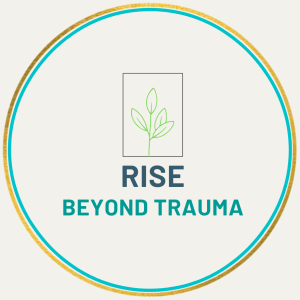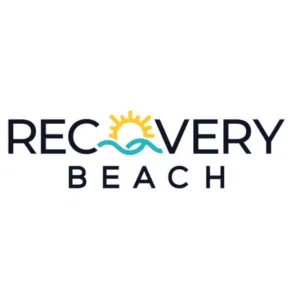Mental illness is a generalized term for illnesses that can affect a person’s thoughts, perceptions, feelings, and behaviors. It can also impact your work and social life, as well as personal relationships.
There are many kinds of mental health disorders, and more are coming into awareness. In this article, we cover and sum up as many mental health disorders as possible. If we are missing any, please get in touch with us at LGBTQ and ALL, and we can add it to this list.
What Are the More Common Types of Mental Illnesses?
Various mental health conditions are currently recognized as mental illnesses. Some of the most common include the following types:
Anxiety Disorders:
People who struggle with anxiety disorders will react to particular objects or circumstances with fear and/or dread. They may also have physical symptoms, like a rapid heartbeat and sweating.
A person will be diagnosed with an anxiety disorder if they have an inappropriate response to their situation, or if their anxiety is so debilitating that it interferes with daily functioning. Some of the most well-known anxiety disorders include generalized anxiety disorder, panic disorder, social anxiety disorder, and specific phobias.
Mood Disorders:
Mood disorders, aka, affective disorders, are when someone experiences persistent feelings of sadness or being overly happy, or fluctuating between these two extremes. The most known mood disorders are depression, bipolar disorder, and cyclothymic disorder.
Psychotic Disorders:
Psychotic disorders feature distorted awareness and thinking. Some of the hallmark symptoms of psychotic disorders are hallucinations, including seeing images or hearing sounds that are not real. These can include hearing voices and/or delusions, which are false fixed beliefs that the person accepts to be accurate, even though there is evidence that shows that it isn’t actually happening.
The most well-known example of a psychotic disorder is schizophrenia.
Eating Disorders
Eating disorders feature intense emotions, attitudes, and behaviors that impact a person’s weight and the way they consume food. There are many types of eating disorders, but the most commonly known are anorexia nervosa, bulimia nervosa, and binge eating disorder. However, many other kinds are being brought into awareness, like orthorexia.
Impulse Control and Addiction Disorders:
People who struggle with impulse control disorders have trouble resisting urges or impulses and engage in acts that could harm themselves or others. Some examples include pyromania (fire-starting), kleptomania (compulsive stealing), and compulsive gambling.
In addition, alcohol and drugs are common types of addictions. People who encounter these disorders become so encompassed by their addictions that they interfere with their lives and relationships.
Personality Disorders
People who have a personality disorder generally have extreme and inflexible personality traits that can be distressing. They can also experience issues with work, school, or social relationships. Moreover, the person’s patterns of thinking and behavior can dramatically differ from society’s expectations to the point that they interfere with their daily functioning.
Some examples of personality disorders include borderline personality disorder, antisocial personality disorder, paranoid personality disorder histrionic personality disorder, obsessive-compulsive personality disorder, schizoid personality disorder.
What is Borderline Personality Disorder?
Post-Traumatic Stress Disorder (PTSD)
PTSD is a mental health condition that can occur after a traumatic and/or terrifying event, like sexual or physical assault, the death of a loved one, a natural disaster, and more. People with PTSD can have long-lasting and terrifying thoughts and memories of the event.
Behavioral and Emotional Disorders in Children
Some common types of behavior disorders in children include oppositional defiant disorder (ODD), conduct disorder (CD), and attention deficit hyperactivity disorder (ADHD). ADHD can also be diagnosed in adults.
What Are Some Other Types of Mental Illnesses That Aren’t as Well-Known?
Some other types of mental illnesses include:
Stress Response Syndromes (Previously Known as Adjustment Disorders)
Stress response syndromes come about when a person develops emotional or behavioral symptoms due to a stressful event or situation. These stressors can include things like natural disasters, car accidents, being diagnosed with a severe illness, or interpersonal issues like a divorce, death of a loved one, job loss, or problems with substance use.
With stress response syndromes, they will usually start within three months of the event and end within six months after the stressor comes to an end.
Dissociative Disorders
People who have dissociative disorders will suffer from extreme disturbances or changes in memory, consciousness, and identity. In addition, they often experience overwhelming stress, often due to a traumatic event. Dissociative identity disorder, previously known as multiple personality disorder is one of the most well-known examples of a dissociative disorder.
Factitious Disorders
Factitious disorders are mental health conditions where a person intentionally creates or complains of physical and/or emotional symptoms to gain sympathy and place themselves in the role of a patient or someone who needs help. The most common examples of factitious disorders are factitious disorder (formerly known as Munchausen syndrome) and factitious disorder imposed on another (Munchausen by proxy).
Somatic Symptom Disorders
A person with a somatic symptom disorder, (previously known as a psychosomatic disorder or somatoform disorder), has physical symptoms of an illness or of pain with an excessive amount of distress, whether or a doctor can find a medical reason or cause for these symptoms or not.
Tic Disorders
People with tic disorders will often make sounds or have non-purposeful body movements that are repeated, quick, sudden, and not under the person’s control. One of the most common examples of a tic disorder is Tourette’s syndrome.















